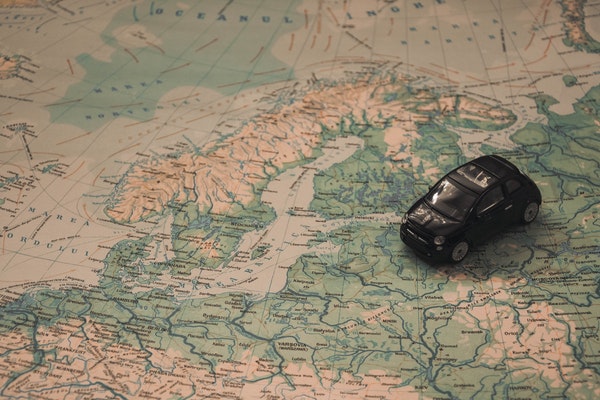Danish is the language the people of Denmark speak. This tiny country to the North of Germany is rich in culture, and the language is equally wonderful. But, language learners often worry about how hard it is to learn Danish. If you have doubts about giving Danish fluency a try, this post will put your mind at ease. Danish is much simpler than it seems. Find out what makes learning Danish easy, and what aspects of the language are harder to grasp.
How Long Does it Take to Learn Danish?
Every language learner wants to know how long their journey to fluency will be. Sadly, there’s no concrete answer. Everyone’s different, and how long it takes to learn a language depends on the individual learner. But, if you want a number, you can have an estimate.
The US Foreign Service Institute (FSI) is ranked Danish as a Category I language. Which means that it’s one of the easiest languages to learn for English native speakers. We’ll dive into that in a little bit. For those wondering how long is takes to learn Danish, the FSI has an answer for that too. You need approximately 575-600 hours or 23-24 weeks of study to reach Danish fluency. But again, this is just an estimate. With the right methods, you can learn Danish much faster.
Reasons Why Learning Danish Is Easy
Learning Danish is actually much simpler than it seems. There are various reasons why English native speakers won’t struggle when it comes to learning Danish.
1. Danish is Easy for Native English Speakers
Danish is part of the Germanic language family. And since English is also a part of that same family, every native English speaker has an advantage when it comes to learning Danish.
How close two languages are in a language family determines how easy it will be to learn. This is thanks to the similar sentence structures, grammar rules, and vocabulary the two languages may share. So, learning Danish for English speakers is not hard at all, instead, it’s one of the easiest languages to master.

2. Easier to Learn Scandinavian Languages with Danish
If you know or want to learn other Scandinavian languages, Danish is a great choice. Swedish is the language closest to Danish. Both Swedish and Danish are North Germanic languages. These are sometimes called Nordic languages. That makes learning Danish very easy.
3. Hundreds of Cognates
There are hundreds of cognates between English and Danish. Cognates are words that look and sound similar, and they also have the same meaning. Since you’re familiar with these from English already, you can enhance your Danish vocabulary in record time. Lean on what you know, and make your Danish studies even easier.
Some common cognates in Danish are:
- absolut – absolutely
- arm – arm
- bringe – to bring
- efter – after
- halv – half
- lang – long
Why Is Danish is Hard to Learn?
There are a few aspects of Danish that are hard to learn. But, this doesn’t make the overall language learning experience hard. When you’re learning Danish, you get used to these new ideas and concepts very fast.
1. Not a Lot of Native Speakers
While this doesn’t reflect on the Danish language itself, it may influence how you learn the language. There are only 6 million Danish speakers in the world. Spoken exclusively in Denmark, it’s far from the most popular languages out there. So, there aren’t that many resources to study Danish.
Luckily, OptiLingo features a reliable Danish language course. It gives you the most common and useful Danish words and phrases, so you can learn to speak like a local easily. No hard grammar or boring drill required. To discover how to easily learn Danish, download OptiLingo today!

2. Strange Logic to Danish Numbers
In English, we count based on tens. However, in Danish, the base of the counting system is 20. While Danish numbers are quite straightforward up to 49, at 50 the logic changes. “Halvtreds” (fifty) literally means “halfway to the third 20”. 60 is “third twenty”, 70 is “halfway to the fourth twenty”, and 80 is “fourth twenty” in Danish. This makes counting in Danish complicated.
But, there’s an easy way to master Danish numbers. Stop doing math. Learn that “halvtreds” means “fifty” as a word, not as a number. That’s how Danish people think of it too. While the 20s counting logic is fascinating in Danish, it causes much more confusion than it needs to.
3. No Word For Please in Danish
The Danish are very polite people. It’s natural that their language reflects this. In English, we focus on the act of saying “please” and “thank you”. In Danish, it’s more about expressing gratitude.
There is no dedicated word for please in Danish officially. Instead, it’s a specific thanks you receive for completing a task. For example, after having a good time with friends, you’d say “Tak for i dag” (Thanks for the day). After a good meal, you’d say “Tak for mad” (Thanks for the food). While this logic for politeness is harder to grasp, it’s a cute quirk in Danish.
Is it Worth Learning Danish?
So if there are parts of Danish that are hard to learn for English speakers, it’s fair to wonder if it’s even worth it. The short answer is: absolutely. Speaking a foreing language fluently can make your life better. And Danish is an especially good choice.
Although only 6 million people speak Danish, it’s a great language with a wonderful culture. Whether you’re traveling to Denmark or you want to live there, you should know at least a bit of the language.
Denmark often ranks first in the quality of life. This means that living in Denmark is really as dreamy as it sounds. People of the country have great infrastructure, clean water, and well-funded education. Not to mention the rich history and plenty of art Denmark has to offer. And you can access all of this if you speak Danish fluently.

Is Danish Harder Than German?
As mentioned before, Danish is a Category I language according to the FSI. And although German is (spoilers) also a Germanic language, it’s actually a little bit more difficult than Danish. FSI ranked German as a Category II language, which means that learning German would take 30 week or 750 hours.
But, German is a little easier than Danish in terms of resources. Some estimates put German as the 10th most spoken language in the world with 230 million speakers worldwide. Which is a lot more than Danish’s 6 million. So, there are a lot more German resources to use, and locals to practice with.
Learn Danish Easily with a Great App
The truth is, learning Danish the easiest to learn with the right resources. If you’re learning with a fun and engaging method, you’ll soon see that learning Danish isn’t hard at all. If you want to try learning Danish with the best way to learn a language, you need to download OptiLingo.
OptiLingo is the ideal app to learn Danish. It’s convenient, so you can take your Danish lesson anywhere. It also has the list of the most useful and common words and phrases, so you learn exactly how the locals speak. And finally, OptiLingo makes you speak Danish. So, it builds your confidence when you speak with real Danish people. Discover how easy it is to learn Danish by downloading OptiLingo today!







